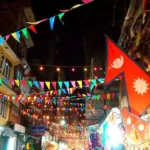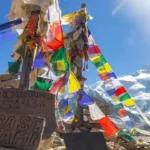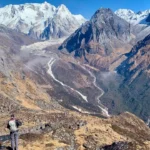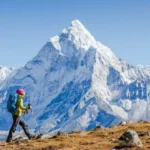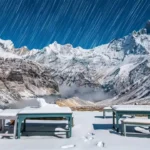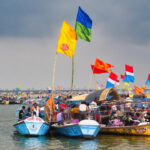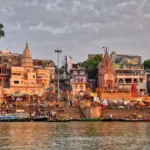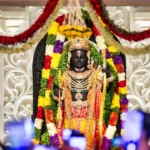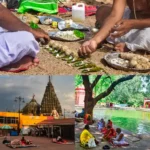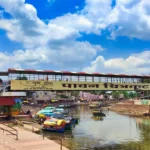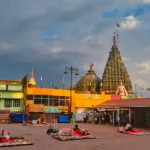How Tea is Grown and Made in Ilam
Ever wonder what goes into making that perfect cup of Ilam tea? Spoiler: it’s way more than just picking leaves. In Ilam, tea cultivation is a blend of nature, tradition, and craftsmanship — passed down over generations, yet refined with care.
Let’s break it down, step by step:
🌱 Step 1: Cultivating the Tea Bushes
Ilam’s tea is mostly grown from the Camellia sinensis plant — the same species used in Darjeeling. The bushes thrive in the region’s cool climate, acidic soil, and misty hillsides at elevations between 3,000 and 7,000 feet.
- Most gardens use organic or low-chemical methods.
- Tea bushes take 3–5 years to mature before harvest begins.
- Careful pruning ensures strong growth and quality leaves year after year.
✂️ Step 2: Plucking the Leaves
This part is still done by hand, mostly by local women who’ve mastered the art. The best quality tea comes from picking only the top two leaves and a budtender, full of flavour, and rich in nutrients.
- Plucking season peaks in spring (March-May) and autumn (September–November).
- Workers often carry bamboo baskets on their backs, filled leaf by leaf under the morning mist.
🌀 Step 3: Withering & Rolling
Once harvested, the leaves are taken to nearby processing centres. Here’s where the transformation begins:
- Withering: Leaves are spread out to reduce moisture — softening them for the next steps.
- Rolling: Leaves are gently rolled by hand or machine to release their natural oils and enzymes, which help develop flavour.
🧪 Step 4: Oxidation (The Flavor Maker)
Depending on the type of tea, leaves may undergo oxidation — where the enzymes react with oxygen, changing the tea’s color and flavor.
- Light oxidation = green or white tea (more grassy and fresh).
- Full oxidation = black tea (stronger, bolder taste).
- Ilam is known for its orthodox tea, especially light black and floral oolong types.
🔥 Step 5: Drying & Sorting
After the perfect level of oxidation, the leaves are dried (usually by hot air) to lock in flavour and stop further fermentation. They’re then sorted by size, type, and quality — and finally packed.
- High-grade teas are exported to Europe, the US, and East Asia.
- Locally, fresh tea is sold loose or in packets at shops and markets around Ilam.
🍵 Step 6: Brew & Enjoy
And just like that — after all the sun, mist, and hard work — you’ve got a tea that’s fragrant, nuanced, and uniquely Ilam. All that’s left is to steep it in hot water and sip slowly.
Bonus: Want to Try It Yourself?
Many tea gardens in Ilam (especially Kanyam and Fikkal) now offer “tea tourism” experiences — where visitors can:
- Join a tea-plucking session
- Watch live demonstrations of the processing.
- Taste different teas and learn how to brew them properly.
In Ilam, tea isn’t just a drink — it’s a way of life. Every step in the process is steeped in care, community, and a connection to the land that makes the final cup something truly special.
Cultural Fusion in the Tea Hills
While Ilam is world-famous for tea, its cultural richness is just as unforgettable. Walking through the tea gardens, you’re not just passing by leaves and hills — you’re stepping into a region where diverse ethnic communities live in harmony, each contributing their colours, flavours, and stories to the land.
This cultural mosaic gives Ilam a soul — a deep-rooted identity that sets it apart from any other tea-producing region in the world.
👥 Who Lives in Ilam?
Ilam is home to a mix of indigenous and migrant communities, each with distinct customs, languages, and ways of life. Among the most prominent groups are:
- Limbu: The indigenous people of eastern Nepal. Their traditions are closely tied to the land, and they are known for their unique attire, folk dances like Dhan Nach, and spiritual rituals.
- Rai: Another major ethnic group known for their bravery (many serve in the Gurkha regiments), music, and vibrant festivals.
- Lepcha: Native to the Shree Antu area, the Lepcha people have a deep connection to nature and are often involved in eco-tourism and homestay initiatives.
- Brahmin, Chhetri, and Newar communities have also settled here, especially in Ilam Bazaar and trading towns like Fikkal.
This mix of ethnicities gives Ilam a multicultural character that travellers love — peaceful coexistence, colourful festivals, and a shared love for tea and nature.
🎉 Local Festivals & Traditions
No matter when you visit Ilam, there’s a good chance you’ll stumble upon a celebration or two. Some key cultural highlights include:
- Udhauli/Ubhauli: Celebrated by the Kirati communities (Limbu & Rai), marking seasonal migrations and thanking nature.
- Sakewa (Chandi Nach): A major festival of the Rai people, filled with rhythmic dances and songs in circular formations.
- Tihar (Festival of Lights): Widely celebrated, especially in Ilam Bazaar, where locals decorate homes with oil lamps and sing Deusi Bhailo.
- Traditional Tea Ceremonies: In many homestays and eco-lodges, you might be invited to share tea the traditional way — slow-brewed, shared with warmth, and paired with local snacks.
🍛 Taste the Culture
Ilam’s food scene reflects its ethnic diversity. While you’re sipping tea, don’t forget to try:
- Kinema: A fermented soybean dish, especially loved by the Limbu community.
- Phulaura: Deep-fried lentil or vegetable fritters, popular with tea.
- Sel Roti: Ring-shaped rice doughnuts served during festivals.
- Gundruk: Fermented leafy greens — a Nepali staple with a tangy kick.
Pro tip: Many homestays offer cooking experiences where you can learn how to prepare these local dishes from scratch.
🏡 Cultural Homestays: Live the Local Way
To truly immerse yourself in Ilam’s cultural fusion, stay with a local family. In villages like Shree Antu, Gajurmukhi, or Maipokhari, homestays are run by locals who are eager to share their lifestyle, stories, and — of course — their tea.
You’ll learn not just how people live, but why they love where they live.
In Ilam, culture flows as freely as tea. It’s in the dances, the kitchens, the smiles of tea pickers, and the songs echoing through the hills. And for travellers, that cultural richness is what turns a great trip into an unforgettable experience.

Ilam’s Tea Economy: Small Farms, Big Impact
Behind every steaming cup of Ilam tea lies a powerful story — one of economic empowerment, sustainable farming, and rural transformation. While the tea gardens may seem peaceful and poetic, they’re also part of a thriving engine that supports thousands of smallholder farmers and local communities.
Ilam’s tea industry is one of the most important economic drivers in eastern Nepal, proving that even small farms can have a huge impact.
🌾 From Subsistence to Sustainable Cash Crops
For decades, many farmers in Ilam relied on traditional subsistence farming — growing maize, millet, or potatoes for personal use. But as global interest in Nepalese orthodox tea (high-quality, hand-processed tea) grew, so did local opportunity.
- Today, over 70% of Nepal’s orthodox tea is produced by small-scale farms.
- These farmers typically own less than a hectare of land, but by cultivating tea, they’ve been able to generate steady income, send children to school, and invest in better homes.
- Many cooperatives and NGOs have helped farmers transition to organic methods, improving both quality and sustainability.
🏭 Local Processing = Local Profits
Rather than selling raw leaves to middlemen, many communities have built local processing units — small factories where leaves are withered, rolled, oxidized, and dried right in the region. This cuts out the middle steps and helps keep more profits within the villages.
It also creates jobs beyond farming:
- Leaf collectors
- Processing technicians
- Packagers and transport workers
- Tour guides and hospitality staff in tea tourism
📦 Tea That Travels the World
Ilam’s tea may be grown in remote hills, but it travels far — to Germany, the UK, the US, Japan, and beyond. Its delicate aroma and floral notes have earned it comparisons to Darjeeling tea but with a distinct Nepali soul.
In recent years, branding efforts have helped put “Ilam Tea” on the global map, raising prices for local growers and sparking pride in the product.
👩🌾 Empowering Women & Marginalized Groups
Tea farming in Ilam has also opened doors for women and indigenous communities. In many households, women lead tea-related work — from plucking to managing homestays for tea tourists.
- Women’s cooperatives are growing across the region.
- Tea income has led to better healthcare access, education, and independence for many.
- Ethnic minorities, such as the Limbu and Rai, are gaining stronger voices in the agricultural and tourism economy.
🌍 Challenges & The Road Ahead
Of course, it’s not all smooth. Small farmers still face:
- Price fluctuations in the global tea market
- Climate change affecting crop cycles
- Limited access to advanced technology or loans
But with rising interest in organic and fair-trade teas, Ilam’s tea economy has a solid future — especially as eco-conscious travellers and conscious consumers continue to support ethical products.
In short, tea in Ilam is more than just a drink — it’s a lifeline, a legacy, and a local revolution.
Best Time to Visit Ilam
With its cool climate, lush hills, and fog-kissed tea gardens, Ilam is a year-round destination — but if you want to experience it at its absolute best, timing is everything. Whether you’re chasing scenic views, looking for the tea-plucking season, or hoping to catch cultural festivals, here’s when to go:
🌸 Spring (March to May): The Blooming Season
This is hands-down one of the best times to visit.
- Tea gardens are at their greenest, and the air is crisp and refreshing.
- Wildflowers start to bloom, adding colour to the hills.
- It’s also the start of the tea-plucking season, so you’ll see locals at work, making it ideal for photography and hands-on tours.
- Clear skies mean you’re more likely to catch sunrise views from Shree Antu.
Vibe: Vibrant, lively, perfect for nature lovers and cultural explorers.
🍂 Autumn (September to November): Post-Monsoon Magic
The rains are gone, the air is fresh, and the skies are crystal clear.
- The second flush tea harvest is underway — a great time for tea tasting and learning about processing.
- Festivals like Dashain and Tihar bring Ilam to life with lights, music, and traditional dance.
- Himalayan views (including glimpses of Kanchenjunga) are sharp and stunning.
Vibe: Peaceful, colourful, and culturally rich — a top choice for travellers.
🌧️ Monsoon (June to August): Lush but Wet
Monsoon brings heavy rainfall, so while the landscape turns ultra-green, travel can be tricky.
- Roads may be slippery or blocked due to landslides.
- Tea plucking slows down, and outdoor activities are limited.
- Great if you want to avoid crowds and just relax in a cosy homestay with a cup of tea.
Vibe: Romantic and super lush — but for the adventurous and patient.
❄️ Winter (December to February): Quiet & Chilly
Winter is Ilam’s off-season, but still worth it if you like cool weather and fewer tourists.
- Mornings are cold and foggy, but beautiful in a misty, mystical kind of way.
- Some tea gardens pause production, but you can still explore and enjoy the scenery.
- A good time for introspective travellers, writers, and photographers who love moody mountain vibes.
Vibe: Serene, sleepy, and perfect for slow travel.
🧳 Quick Travel Tip:
If you want the best of both worlds — clear skies and active tea gardens — aim for April or October. These months offer a sweet spot of good weather, vibrant activity, and stunning views.
No matter where you go, Ilam welcomes you with tranquil hills, fragrant breezes, and the warmth of local hospitality. Just bring your camera, a light jacket, and a love for tea — and you’re good to go!
How to Get to Ilam: Travel Tips & Routes
So you’re ready to trade traffic for tea gardens an — amazing choice! While Ilam feels like a world away, it’s surprisingly accessible if you plan. Whether you’re coming from Kathmandu, Pokhara, or even India, getting to Ilam is part of the adventure.
Here’s your friendly guide to all the routes, tips, and travel options 👇
🚌 By Road: The Classic Route
The most common way to reach Ilam is by road, and it’s scenic but long — think winding hill roads, local villages, and views for days.
- From Kathmandu:
- Distance: ~700 km
- Time: 14–16 hours by bus
- Bus Options: Day and night buses from Gongabu Bus Park, Koteshwor, and Kalanki.
- Tip: Opt for a deluxe or VIP coach if you want a smoother, more comfortable ride.
- From Birtamod or Jhapa:
- If you’re flying into Bhadrapur Airport, Birtamod is your starting point.
- Distance to Ilam: ~90 km (approx. 3 hours by taxi or shared jeep)
- Scenic highlights: Tea hills begin to show within an hour — windows down, camera out!
✈️ By Air: The Fast Track (with a Little Road)
- Flight to Bhadrapur Airport (BJP)
- Daily flights from Kathmandu (30–40 mins) on Buddha Air or Yeti Airlines.
- From Bhadrapur, grab a taxi or jeep to Ilam (3–4 hours of beautiful hillside driving).
- This is the fastest and most convenient option, especially if you’re short on time.
- Coming Soon: Sukilumba Airport (Ilam)
- A domestic airport is under construction in Sukilumba Danda, Ilam. Once operational, this will make reaching Ilam quicker and direct, with shorter road transfers.
🚕 Local Transport Options
Once in Ilam, getting around is easy:
- Shared Jeeps: Frequent and affordable for hopping between towns like Ilam Bazaar, Fikkal, Kanyam, and Shree Antu.
- Private Cars/Taxis: Available in Birtamod and Ilam Bazaar — ideal for flexible sightseeing.
- Motorbike Rentals: For the adventurous! Great way to explore the hills at your own pace (available in Birtamod or nearby cities).
🗺️ Routes from India (Darjeeling/Siliguri)
If you’re coming from Darjeeling or Siliguri in India:
- Cross into Nepal via the Pashupatinagar or Kakarbhitta border.
- Ilam is only a 2–3 hour drive from there, making it a popular side trip for Indian travellers.
- Bring valid ID/passport — Indian citizens don’t need a visa, but you’ll need to check in at the border.
🧳 Travel Tips for a Smooth Journey
- Book buses/flights in advance during holidays and festival seasons.
- Carry motion sickness meds — those hill roads are no joke!
- Pack layers — the weather in Ilam can shift from sunny to chilly quickly.
- Download offline maps — cell coverage can be spotty in remote areas.
- Bring cash — ATMs are available in Ilam Bazaar but not guaranteed in smaller villages.
In short: whether you’re flying, riding, or road-tripping, getting to Ilam is worth it. The journey might be long — but those misty hills, warm cups of tea, and smiling faces at the end will make you glad you came.

Top Experiences for Tourists in Ilam
So, you’ve made it to Ilam. You’re surrounded by rolling tea gardens, crisp mountain air, and a peaceful vibe that makes you want to slow down and savour every moment. But what exactly should you do here (besides sipping endless cups of tea)?
Here’s a roundup of the must-do activities, local gems, and immersive experiences that make Ilam unforgettable:
🍃 1. Stroll Through the Tea Gardens
Whether it’s Kanyam, Fikkal, or Antu, walking through Ilam’s tea estates is a sensory treat:
- Watch farmers pluck leaves with rhythmic grace.
- Snap Insta-worthy photos among lush green waves.
- Learn the difference between first-flush and second-flush tea.
Many gardens even welcome visitors to join the tea-picking process — a fun and hands-on way to connect with local agriculture.
🍵 2. Tea Tasting and Plantation Tours
Don’t leave without trying Ilam’s star product: orthodox tea. Some gardens and processing centers offer:
- Guided tours of the production process — from leaf to cup
- Tasting sessions of green, black, oolong, and white teas
- Workshops on brewing techniques and tea pairings
Ask locals where to find fresh, loose-leaf tea to take home — way better than what you’ll find in stores!
🌅 3. Catch the Sunrise at Shree Antu
This one’s a non-negotiable bucket-list moment.
- Hike to the Shree Antu View Tower before dawn.
- Watch the first light spill across the tea hills and Kanchenjunga peaks.
- Stay in a nearby homestay for an early start and local breakfast after.
Bring a jacket — it’s chilly up there in the morning!
🧘♀️ 4. Unplug and Relax in Nature
Ilam is perfect for digital detoxes and slow travel. Stay a few nights in an eco-lodge or hilltop retreat and:
- Meditate by a tea garden at sunrise
- Write, sketch, or read without distraction.
- Enjoy fireside tea chats with your hosts.
This is your chance to just be.
📷 5. Photography & Drone Shots
Whether you’re a pro or just love snapping pretty things, Ilam is a dream:
- Tea rows at golden hour
- Portraits of local tea pluckers in vibrant dresses
- Moody mountain fog creeping over the hills
- Starry skies on clear nights
Just be respectful when photographing people — most are happy to pose if you ask nicely.
🏡 6. Stay in a Cultural Homestay
Trade hotels for heartwarming homestay experiences in villages like Shree Antu, Gajurmukhi, or Maipokhari:
- Eat home-cooked Nepali meals
- Learn to make traditional dishes like gundruk and kinema.
- Hear folklore from elders and enjoy evening dance performances.
- Wake up with the scent of fresh tea brewing in the next room.
It’s authentic, cosy, and affordable.
🎉 7. Join a Local Festival or Cultural Event
If you time your visit right, you could catch:
- Sakewa (Chandi Nach) – a colourful Rai dance festival
- Udhauli/Ubhauli – Kirati celebrations of seasonal change
- Tihar – Nepal’s festival of lights, with stunning tea garden decorations
Ask your homestay host or local guides — they’ll know what’s happening and where to go.
🛶 8. Visit Antu Pokhari & Maipokhari
These serene lakes are perfect for a peaceful half-day escape:
- Antu Pokhari: Great for easy walks and birdwatching
- Maipokhari: A sacred wetland and botanical treasure, surrounded by forests and prayer flags
Great spots for meditation, nature walks, or a quiet picnic.
🌄 Bonus: Day Trips & Side Adventures
- Sandakpur Viewpoint (border of Nepal and India) for epic ridge-top hikes
- Fikkal Bazaar for local market vibes and snack shopping
- Soktim and old tea factories to explore Ilam’s tea history
In Ilam, the real magic isn’t in rushing through tourist spots — it’s in slowing down and soaking in the rhythm of tea country life.









